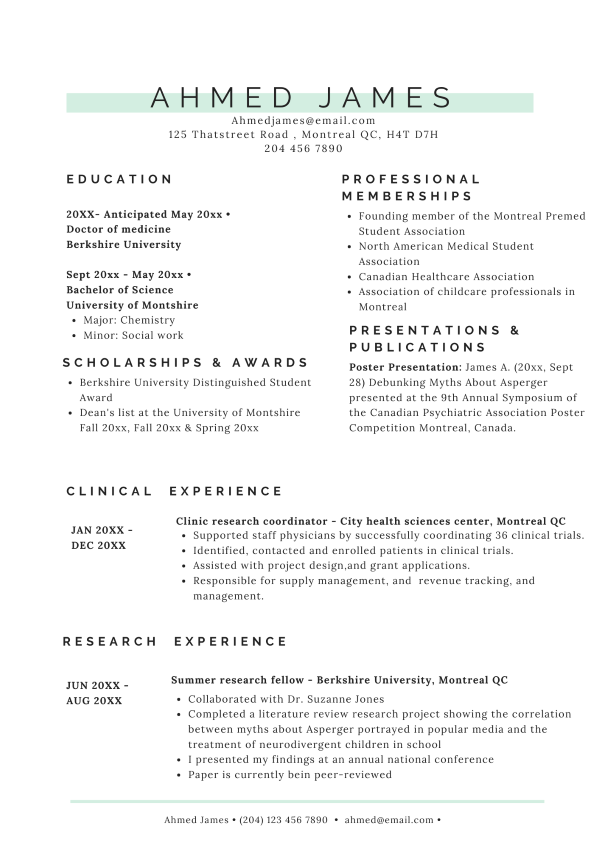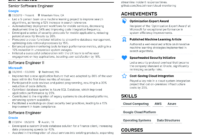Navigating the path through medical school is a demanding journey, filled with rigorous coursework, clinical rotations, and countless hours dedicated to learning. Amidst this intensive period, one crucial document often rises to the forefront, especially as you consider residency applications: your Curriculum Vitae, or CV. Unlike a standard resume for a typical job, the medical CV has its own unique set of expectations and a format that is highly valued by admissions committees.
This isn’t just about listing your accomplishments; it’s about presenting your story, your experiences, and your potential in a structured, comprehensive way that resonates with the medical community. Understanding the nuances of what medical programs look for, and how to best showcase your journey, is absolutely vital for your future endeavors in medicine.
Understanding the AAMC’s Approach to Medical Student CVs
When you begin to prepare your applications for residency, you’ll quickly encounter the Association of American Medical Colleges (AAMC). The AAMC plays a pivotal role in standardizing the application process through the Electronic Residency Application Service, or ERAS. While ERAS provides its own structured input fields for your experiences and accomplishments, the underlying principles and categories often mirror what is expected in a well-organized medical CV. This is why understanding the AAMC’s general approach to presenting a medical student’s profile is so beneficial, even if you are creating a standalone CV document.
Think of it this way: medical committees are looking for a consistent, thorough, and easily digestible overview of your academic and professional life as it pertains to medicine. They want to see your progression, your commitment, and how your unique experiences have shaped your aspirations. This focus on a holistic review means that every section, from your research to your volunteer work, contributes to the overall narrative of who you are as a future physician. The unofficial “aamc cv template medical student” often refers to this expectation of a comprehensive and thoughtfully organized document that aligns with the values and information sought by residency programs.
Your CV isn’t merely a list; it’s a testament to your dedication. It should highlight not just what you’ve done, but the impact you’ve made, the skills you’ve gained, and the lessons you’ve learned. This approach requires careful curation and precise language to ensure that your message is clear and compelling to those reviewing your application. Every detail contributes to painting a full picture of your readiness for the next steps in your medical training.

Key Sections to Include in Your Medical Student CV
- Contact Information: Make sure it’s current and professional.
- Education: List all institutions, degrees, and relevant dates, starting with your most recent. Include honors or distinctions.
- Research Experience: Detail your projects, your role, methodology, and any publications or presentations. This section is often critically important.
- Publications and Presentations: If separate from research, list peer-reviewed articles, abstracts, poster presentations, and oral presentations.
- Clinical Experience: Outline your rotations, shadowing experiences, and any direct patient care opportunities. Focus on the learning and responsibilities.
- Volunteer and Community Service: Showcase your commitment to service and any leadership roles you held.
- Work Experience: Include any paid employment, especially if it demonstrates transferable skills like teamwork, problem-solving, or communication.
- Leadership and Extracurricular Activities: Highlight roles that demonstrate leadership, collaboration, and initiative.
- Awards and Honors: List any scholarships, dean’s list mentions, or other recognitions.
- Professional Memberships: Include any medical or scientific organizations you belong to.
- Skills: Languages, relevant software, or clinical skills.
Crafting Your AAMC-Compliant CV: Tips for Success
Once you understand the key components, the next step is to actually craft the document. This is where attention to detail and strategic presentation truly make a difference. Begin by gathering all your information, no matter how small it seems. From that extensive collection, you’ll then filter and refine, ensuring that every entry serves a purpose and contributes positively to your overall profile. Remember, clarity and conciseness are paramount; committees review many applications, and yours needs to be easy to read and understand at a glance.
When describing your experiences, whether it’s research, clinical work, or volunteering, use strong action verbs. Instead of saying “was involved in,” try “led,” “developed,” “managed,” or “analyzed.” Quantify your achievements whenever possible. For example, rather than “volunteered at a clinic,” consider “provided direct patient support to over 50 individuals weekly at a free clinic.” These details paint a more vivid picture of your contributions and impact. Tailoring your descriptions to the specific programs you are applying to can also be a significant advantage, emphasizing experiences most relevant to their stated interests.
Think about the narrative your CV tells. Does it show a consistent passion for medicine? Does it highlight a developing skill set that aligns with the demands of residency? Your CV should logically progress, showcasing your growth from a curious undergraduate to a dedicated medical student poised for the next stage of training. It’s an evolving document, so start early and continuously update it as you gain new experiences and complete new projects. Don’t wait until the last minute before application deadlines to begin compiling everything.
Finally, proofreading is absolutely non-negotiable. A single typo or grammatical error can detract from the professionalism of your entire document. After you’ve spent hours perfecting your content, step away from it for a while, then return with fresh eyes. Better yet, ask trusted mentors, peers, or career advisors to review your CV. They can catch mistakes you’ve overlooked and offer invaluable feedback on clarity, impact, and overall presentation, ensuring your “aamc cv template medical student” really shines.
Creating a compelling medical student CV is a critical step in your journey toward residency and beyond. It’s an opportunity to articulate your experiences, skills, and aspirations in a format that speaks directly to admissions committees. By taking the time to carefully construct and refine this document, you are not only presenting your past achievements but also confidently laying the groundwork for your promising future in medicine.
